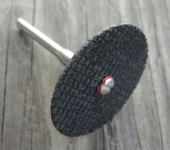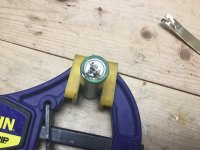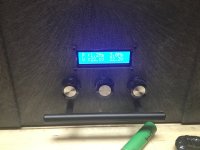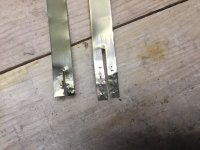My red brass arrived today thanks spinning magnets!
My first impression is that it is annealed yellow brass, but I'm not sure ( I might try and figure it out)
Anyway I did some initial testing with it. It was .33mm thick so I beat a few bits out to .2mm -it's quite soft.
At 0.2mm it spot welds exactly like the 0.2mm yellow brass which I would say is good but not excellent. It takes more power than equivalent thickness in nickel, is a bit less consistent and is quite a bit weaker. But it's pretty good over all. I'd say that if you want to experiment with something similar, get yellow brass cause it's easy to buy.
So then I tried the full .33 ml. Even with stupid power I couldn't weld it... And it blew holes in the can if I messed up with that much power

But, then I slotted it.
.33mm red/yellow (whatever it is) brass welded really well when slotted. It took a mild increase over .2mm nickel ( un slotted) but was much stronger and more consistent than the .2mm brass
The slotting does suck, cause it's hard to do mid strip, but this might be a good option for high current series connects.
I also did .1mm pure copper for reference. Welds moderately easy, but is inconsistent and fractures around the weld if you slightly overdo it. This leads to significant weakness ( it's already really weak)
All these test were even better if welding to nickel not just the can. Leads me to think that say .1mm nickel in broad sheet laid down first for the parallel group with .3 brass for the series connects might be really good.
Lots more testing to do...
One of the copper alloy suppliers said they'd see what they could do with my request, but I haven't he heard any further yet.





